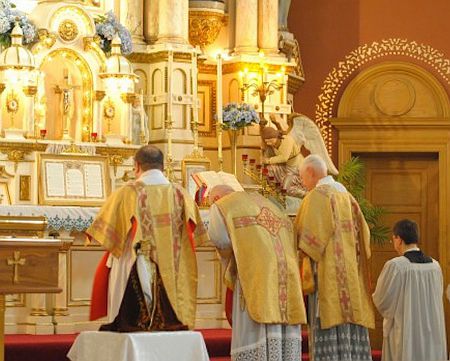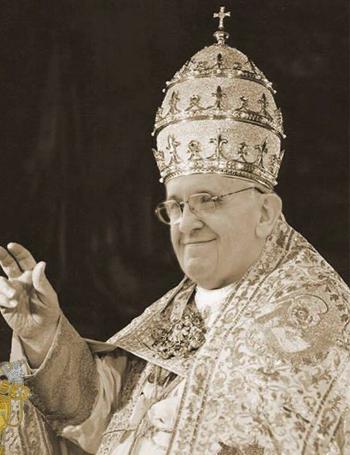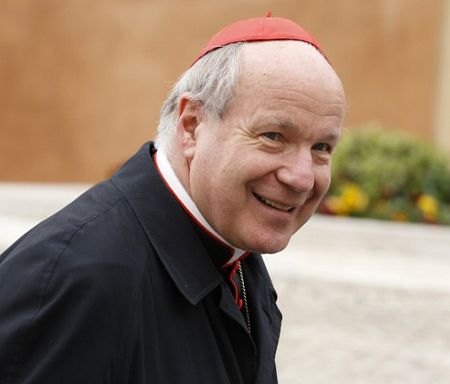Oppsummeringen etter bispesynodene om familien i 2014 og 2015 ble utgitt i går, og norske nyhetskilder har meldt kort om dette, stort sett gjennom en NTB-arktikkel, som f.eks. Vårt Land har gjengitt. Denne korte gjengivelsen er korrekt på enkelt punkter, men også forholdsvis misforstått. Jeg har omstrukturert meldingen litt og gir også noen kommentarer til de enkelte artiklene.
I det nye dokumentet fra paven heter det at samboere bør ønskes velkommen og «rettledes, tålmodig og diskret». Han mener at homofile bør respekteres – men fastholder kirkens motstand mot homofile partnerskap og ekteskap.
Ingenting her er jo nytt; vi har i mange år mottatt samboere vennlig og veiledet dem diskret. (Riktignok kan det være at noen utenlandske prester her har vært altfor strenge, jeg har hørt et par eksempler på det.) Og de homofile skal også alltid møtes med respekt, det sa f.eks. Den katolske kirkes katekisme fra 1992 veldig tydelig. Der leser vi i artikkel 2358. «Et ikke ubetydelig antall menn og kvinner viser grunnleggende homoseksuelle tendenser. Denne tilbøyelighet, som er objektivt feilrettet, utgjør en prøvelse for de fleste av dem. Disse må tas imot med respekt, medfølelse og fintfølelse. Alle utslag av urettferdig diskriminering mot dem skal unngås. …»
I tillegg taler paven varmt om kjærlighetens «erotiske dimensjon», og mener kirken bør ta selvkritikk for tidligere å ha hevdet at ekteskapets eneste formål var å få barn.
Her er det knapt grunn til selvkritikk. Kirken har jo de siste årene alltid presentert ekteskapets to hovedformål som 1) Fellesskapet mellom de to, 2) å få barn. I tidligere tider var rekkefølgen her motsatt, og plikten til å få barn kunne bli satt over utviklingen av et godt og varmt fellesskap mellom ektefellene, men det er tross alt lenge siden.
Den katolske kirke anerkjenner ikke skilsmisse, selv om den juridiske skilsmissen er et faktum. I stedet har kirken en ordning med såkalt annullering av ekteskap. Ifølge katolsk lov/ kirkerett kan begrunnelsene for annullering være at den ene parten ikke ønsker barn, (ikke virkelig lovet/ ønsket at ekteskapet skulle vare hele livet), mindreårighet ved inngåelse, tvang, og psykisk sykdom – eller at den ene parten (hadde vært gift) tidligere.
En knapp måned i forkant av bispemøtet i fjor høst sendte paven ut et brev med sju punkter skal blant annet føre til at prosessen tar kortere tid og koster mindre (i Norge har den alltid vært billig).
I avsnittene over har jeg presisert enkelte ting (i parentes) som var uklare og mangelfulle. Men det står likevel fast at Kirken i alle år har hatt ekteskapstribunaler, som i mange land har fungert svært godt. Nå vektlegges det (og det er det absolutt ingen uenighet om i Kirken) at tribunalene må fungere godt (og være billige) alle steder, og prosessen har også blitt forkortet noe.
Paven ser ut til å åpne døren på gløtt for at skilte katolikker som har giftet seg på nytt (med en borgerlig vielse), kan få gå til nattverd – noe reglene inntil nå har sagt de ikke kan.
I dette siste avsnittet ligger det eneste kontroversielle i dette lange dokumentet; er det mulig at katolikker som lever i et nytt (sivilt) ekteskap som Kirken ikke har godtatt (fordi de ikke har prøvd å gifte seg kirkelig, ikke har gått til tribunalet med et tidligere ekteskap eller fått avslag fra tribunalet), at disse likevel skal kunne mottatt absolusjon i skriftemålet og kunne motta kommunion i messen? I rundt 50 år har det vært prester som har ment (jeg har ikke gjort det, og forstår heller ikke grunnlaget for å kunne gjøre det) at slike likevel kan motta sakramentene, gjennom det som kalles en pastoral løsning som pr. definisjon er uoffisiell.
Det kan muligens se ut til at en slik løsning har blitt delvis eller nesten godtatt av pave Frans, men dette er ikke skrevet tydelig i dette lange dokumentet noe sted. Jeg skal nå snart kaste meg over grundige og mer teologiske analyser at dokumentet «Amoris lætitia» og se hva de «lærde mener.
Man finner hele dokumentet på engelsk her.


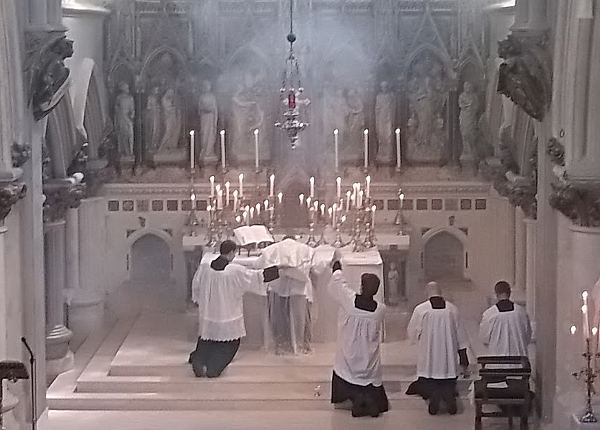
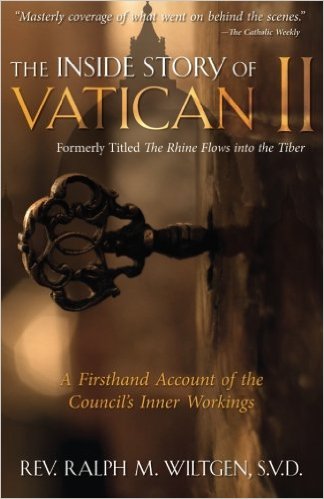 Jeg har nå begynt å lese (en Kindle-utgave av) boka The Rhine Flows Into the Tiber, jeg leser den utvidede utgaven fra 1991 kalt
Jeg har nå begynt å lese (en Kindle-utgave av) boka The Rhine Flows Into the Tiber, jeg leser den utvidede utgaven fra 1991 kalt 